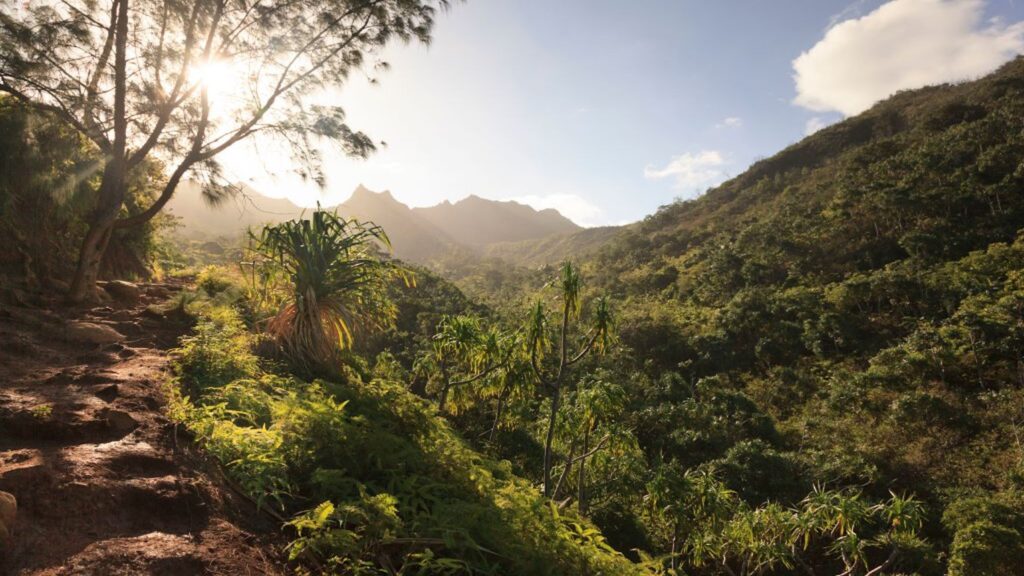The hiker was rescued while attempting the Kalalau Trail, a challenging 22-mile round-trip trek from Ke’e Beach to Kalalau Beach. The 22-mile round-trip trek offers the only access to the rugged coastline of the renowned Nāpali Coast.
Na Pali Coast on Kauai, Hawaii (Photo: Jumping Rocks/Universal Images Group via Getty Images)
Published October 31, 2025 02:42PM
A hiker was evacuated by air on October 29 from the rugged and remote Kalalau Trail in Hawaii after he was “unable to hike out due to a rapidly worsening infection from an apparent spider bite,” wrote the Kauai Fire Department (KFD) in a news release.
The hiker, a 57-year-old local from Kauai, survived the ordeal.
The Kalalau Trail is a challenging 22-mile round-trip trek from Ke’e Beach to Kalalau Beach, offering the only access to the rugged coastline of the renowned Napali Coast. Characterized by emerald-hued cliffs, towering waterfalls, and dramatically lush valleys, this region is difficult ot access and even more testing to hike through.
KFD said the department received a text-to-911 message from the hiker, who reported that an infection from a spider bite had spread. He was experiencing fever and weakness, and couldn’t be safely evacuated.
Līhu‘e Fire Station responded just after the text came in at 9:45 A.M. Rescuers evacuated the hiker from Kalalau trail, which is located on the northern side of the island, to a softball field located in Waimea, on the southern half of the island. First responders, who arrived at Kalalau Beach, said the hiker could walk but was “in visible distress.”
After a medical assessment, the hiker was transported to a local hospital for further medical care.
Meghan Wright, public information officer for the Office of the Mayor, told Outside that the Kaua’i Fire Department conducted the rescue and initial medical aid before transferring the patient to American Medical Response for further care. The patient’s condition is currently unknown.
Although there are many types of spiders in the Hawaiian Islands, there are two species that can be particularly dangerous to humans: the brown widow and southern black widow, according to the Hawaii Department of Health.
“Though rare, spider bites do occur. Your risk of being bitten increases if you live in areas where there is clutter and debris or if their habitat has been disturbed. Widow spiders prefer warm climates and dark, dry places,” writes the department on its website.
When bitten by the southern black widow, the spider’s venom attacks the nerve endings in muscles that can cause severe pain and muscle cramps at the source of the bite, which can then spread throughout the body. However, only females can bite—males are too small, writes the Cleveland Clinic.
Named for their coloring, the less-aggressive brown widow spiders are considered by the Center for Invasive Species Research in California to be minor compared to the black widow. It’s theorized this is because the brown widow isn’t able to inject as much venom as its larger relative.
Brown widow and bold jumping spiders, which measure only a half-inch in size, also have painful bites that can produce redness, swelling and blistering.
If bitten by a spider, the Hawaii Department of Health advises hikers to remain calm and identify the spider, if possible. Bites should be cleaned with soap and water, and cool compresses can help to reduce swelling. If an infection appears to persist, contact your healthcare provider.


